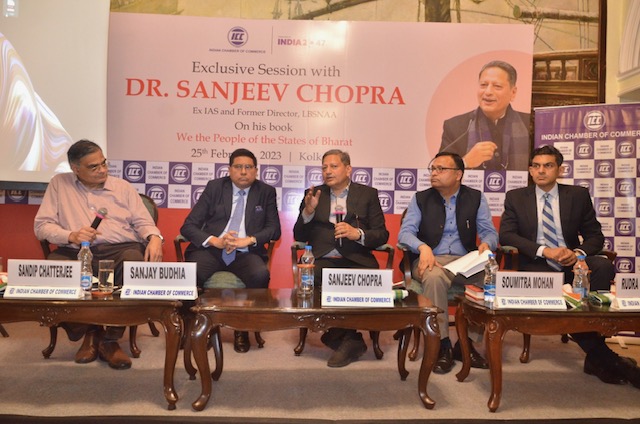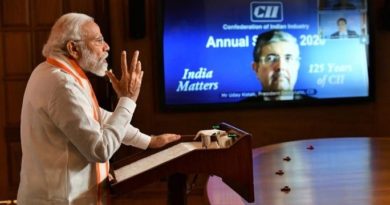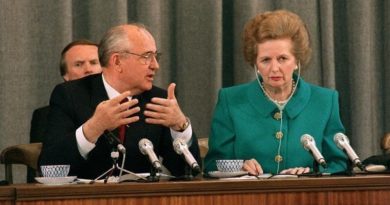“We the People of the States of Bharat” : a perspective of an ex – IAS

An exclusive session on the book – “We the People of the States of Bharat” written by Dr. Sanjeev Chopra ex -IAS, former journalist and former Director of Lal Bahadur Shastri National Administrative Academy, was organised by Indian Chamber of Commerce (ICC) at Bengal Club in Kolkata recently.
The session witnessed valuable insights on the pre & post-independence era and the consolidation of princely states and formation of present ,modern geopolitical entity called India . Session discussion panel included Soumitra Mohan, IAS, Secretary, Goverment of West Bengal and former journalist of PTI , Dr. Sandeep Chatterjee, noted Neurosurgeon, Sanjay Budhia, Industrialist & Past President (ICC), Rudra Chatterjee, Industrialist & Past President(ICC), and Dr. Rajeev Singh, Director General (ICC).
Commenting about the book, Soumitra Mohan, said, “The book speaks broadly about the Indian Independence Act. It covers the state of three provinces following the Britishers exit from our country. It further sheds light on chief Commissioner Areas, Governor Provinces and thirdly the princely states. Almost 552 princely states, which were later organised by Sardar Vallabhbhai Patel. The way Sardar Patel along with VP Menon worked tirelessly to annexe the princely states has been mentioned in the book. A lot of autonomy was given to the princely states. Two agreements were signed to serve as the instrument of accession, while autonomy restricted to the government to ensure this practice was implemented. Interestingly there were 20 names again suggested for Uttar Pradesh such as Aryabhatta, Aryabhatta Pradesh, Brahma Pradesh etc. So, these are very interesting issues highlighted in the book projecting the division of states and its development which has been discussed further in the book.”
Dr. Sandeep Chatterjee, said, “The book is intriguing when you read it showcasing the ultimate paradox. Having said that, the book reveals the history of geography at the beginning and the geography of history during its end .”
Rudra Chatterjee, said, “The book interestingly narrates not only the history or geography but an overall summary of our country. The Bangladesh partition in 1971 was one of those periods whose impact was felt at our borders. The partitions of 1905 and 1947 have also been explored in the book.”
On the theme of the book, Dr. Sanjeev Chopra, author said, “Today, we see West Bengal seeking changes. There is a very interesting story when Karnataka was previously called Mysore. There were sections from the local community that did not want to change the name, keeping in mind people’s emotions. India after partition had several names, Hindustan, Bharat, India but Britishers mentioned that they never wanted to call ourselves dominion of Pakistan and Hindustan. Further V.P. Menon and Sardar Vallabhbhai Patel worked tirelessly making our country the centralised factor. Demographic changes have been affecting politics. Most of states did not face the same wrath after partition which Bengal and Punjab had gone through. Having said that Bengal was not treated well after the partition whereas the Punjabi refugees were accepted with open arms by the other princely states. Precisely the book mentions Identity is fluid and not cast in stone.”
Sanjay Budhia, said, “Our author has great passion for literature, which is very much reflected in his book, focusing down on the cherished career of the country. The book takes us back in time to discuss the history of Bharat. The book clearly mentions the national ability to distinct through socio-economic boundaries. The book enlightens the readers with enriching ideas .”
Dr. Rajeev Singh, said, “Everyone gets the flavour of history from the book . This book is what people of India need to know, especially the young generation.”



